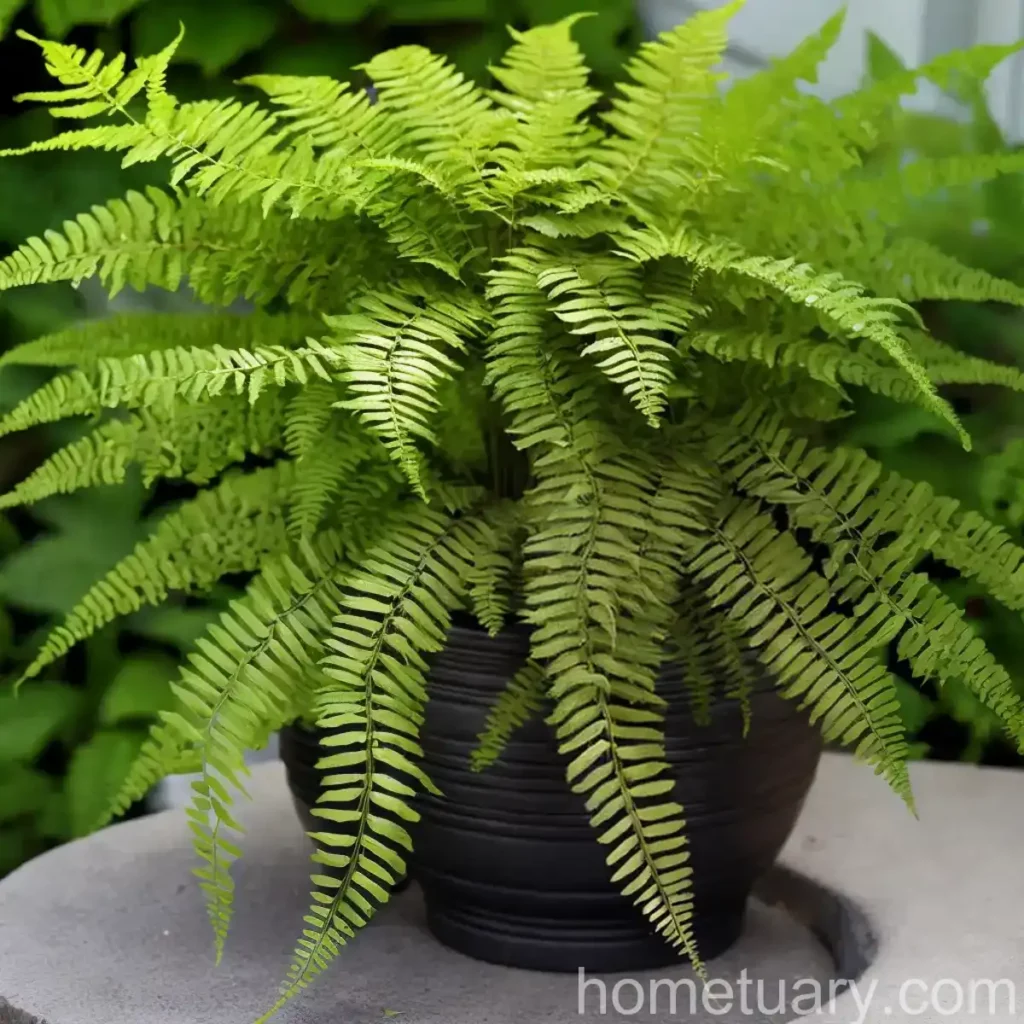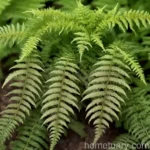Goldie’s Shield Fern (Dryopteris goldiana): A Comprehensive Guide
Introduction
Plants are an integral part of our natural environment, providing aesthetic appeal, ecological balance, and valuable resources. One such fascinating plant is the goldie’s shield fern (Dryopteris goldiana), a species with unique frond colors and shield-like leaves native to Eastern North America. In this comprehensive guide, we will delve into the world of the goldie’s shield fern, understanding its characteristics, cultivation requirements, uses, and much more.
What is Goldie’s Shield Fern (Dryopteris goldiana)?
Goldie’s shield fern, scientifically known as Dryopteris goldiana, is a striking fern species boasting large fronds with golden foliage. It is a native plant of the Appalachian region, wherein the wild, it thrives in woodland gardens, streamside habitats, and wetland environments. The unique characteristics and decorative features of the goldie’s shield fern make it an attractive addition to landscaping, shade gardens, and native plant gardens.
Key Takeaways
Goldie’s Shield Fern (Dryopteris goldiana)
- Scientific Name: Dryopteris goldiana
- Native Habitat: Eastern North America, particularly the Appalachian region
- Characteristics: Large fronds, golden foliage, shield-like leaves
- Cultivation Uses: Landscaping, shade gardens, woodland gardens, streamside habitats
- Distinctive Features: Unique frond colors, ornamental value
Culture
Uses
The goldie’s shield fern is widely utilized for both ornamental and ecological purposes:
- Ornamental Use: Its vibrant foliage and decorative fronds make it a popular choice for landscaping and native plant gardens.
- Ecological Value: As a native species, it contributes to the biodiversity and ecological balance of its natural habitat.
Water
Watering:
– The goldie’s shield fern thrives in moist soil conditions, requiring regular watering to maintain adequate moisture levels.
– It is essential to keep the soil consistently moist, especially during hot and dry periods, to support healthy growth.
Humidity:
– High levels of humidity are beneficial for the optimal growth and development of the goldie’s shield fern, making it well-suited for shaded and moist environments.
Sunlight
Light Requirements:
– The goldie’s shield fern prefers shaded or partially shaded areas, making it an ideal choice for shade gardens and woodland landscapes.
– Direct sunlight should be avoided, as it can lead to leaf scorch and diminished foliage quality.
Fertilizer
- Applying a balanced, slow-release fertilizer in the spring can promote healthy growth and vibrant foliage.
- It is advisable to use a fertilizer specifically formulated for ferns to provide essential nutrients without causing over-fertilization.
Soil
Soil Type:
– Well-drained, organic-rich soil with a slightly acidic to neutral pH is ideal for cultivating goldie’s shield fern.
– Adding organic matter such as compost or peat moss to the soil can enhance its quality and moisture retention capacity.
Pruning
- Regularly removing damaged or discolored fronds can help maintain the plant’s aesthetic appeal and overall health.
- Pruning should be carried out in early spring before the emergence of new growth.
Propagation
Division:
– Propagation of the goldie’s shield fern is commonly accomplished through division, wherein clumps of the plant are carefully separated and replanted.
– This method is best performed in early spring to encourage successful establishment.
Container Popularity
- Due to its preference for shade and moist conditions, goldie’s shield fern is often cultivated in containers, making it a popular choice for shaded patios, balconies, and indoor environments.
Container Common Diseases
- Root Rot: Overly moist or poorly-drained soil can lead to root rot, causing the plant to wilt and exhibit signs of decay.
Disease Diagnosis
- Diagnosis of diseases in goldie’s shield fern involves carefully observing the foliage, roots, and overall appearance of the plant for signs of discoloration, wilting, or abnormal growth.
Common Pests
Slugs and Snails:
– These pests are known to feed on the foliage of goldie’s shield fern, leading to unsightly damage and reduced plant vigor.
Control Measures:
– Encouraging natural predators, such as birds and beetles, can help manage slug and snail populations.
Botanist’s Tips
- Maintain Moisture: Consistently providing adequate moisture is crucial for the health and vigor of goldie’s shield fern.
- Shade Preference: Ensure that the plant is placed in a shaded or partially shaded location to prevent leaf scorch and maintain vibrant foliage.
- Pruning Practices: Regularly removing old fronds and maintaining a clean growing environment can contribute to the overall well-being of the plant.
Fun Facts
- Goldie’s shield fern is named after American botanist and plant collector, John Goldie, who contributed significantly to the study of North American flora.
- The golden fronds of this fern species add a captivating touch to shaded landscapes and woodland gardens.
Links to External Resources
For further information on goldie’s shield fern (Dryopteris goldiana) and related topics, the following external resources are valuable references:
1. The American Fern Society – Dryopteris goldiana
2. North American Native Plant Society – Goldie’s Shield Fern
In conclusion, goldie’s shield fern (Dryopteris goldiana) offers a captivating combination of unique frond colors, decorative foliage, and a penchant for shaded environments. By understanding its cultivation requirements and appreciating its ornamental value, plant enthusiasts can embrace the beauty of this native fern species, contributing to the preservation of Eastern North American flora.















